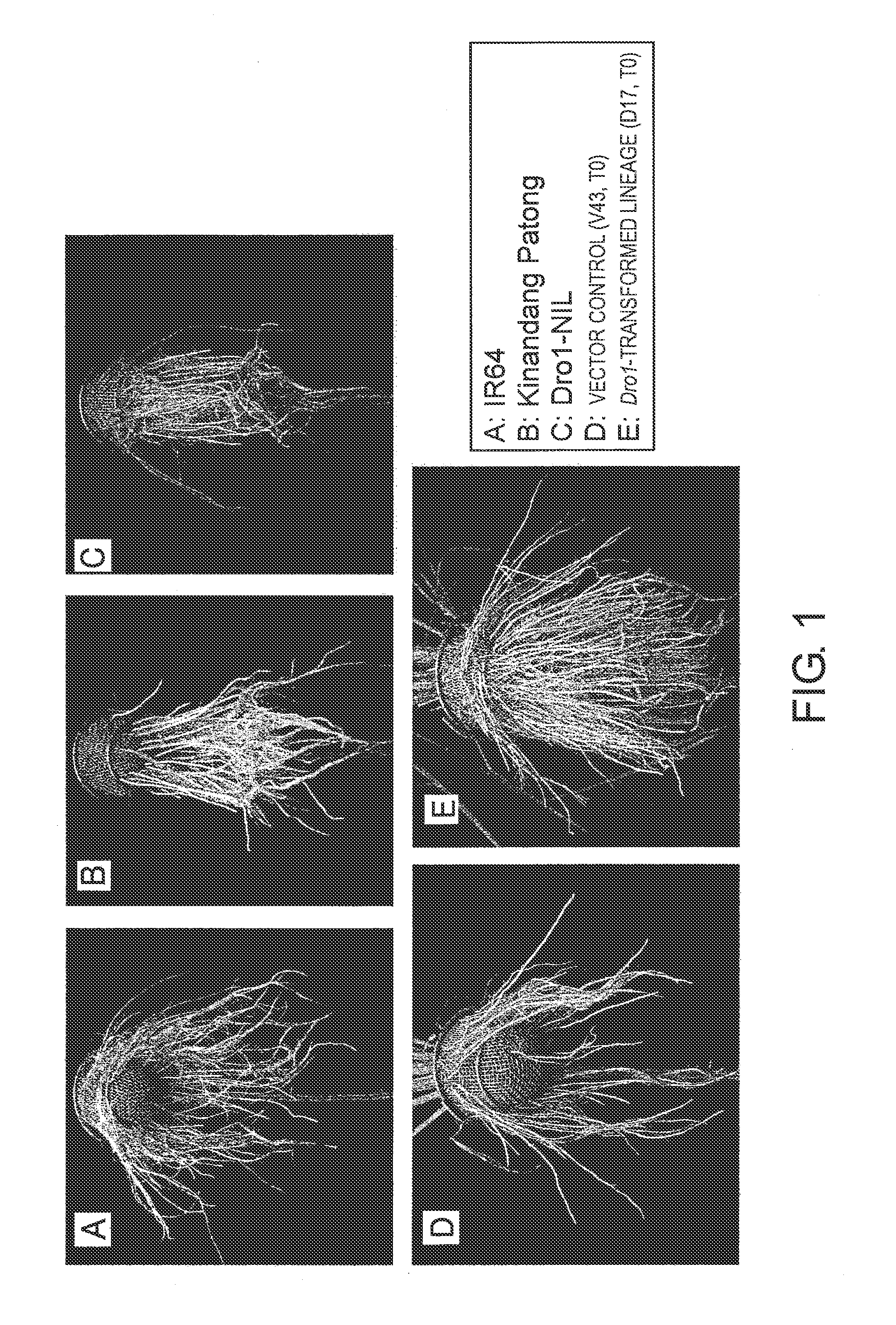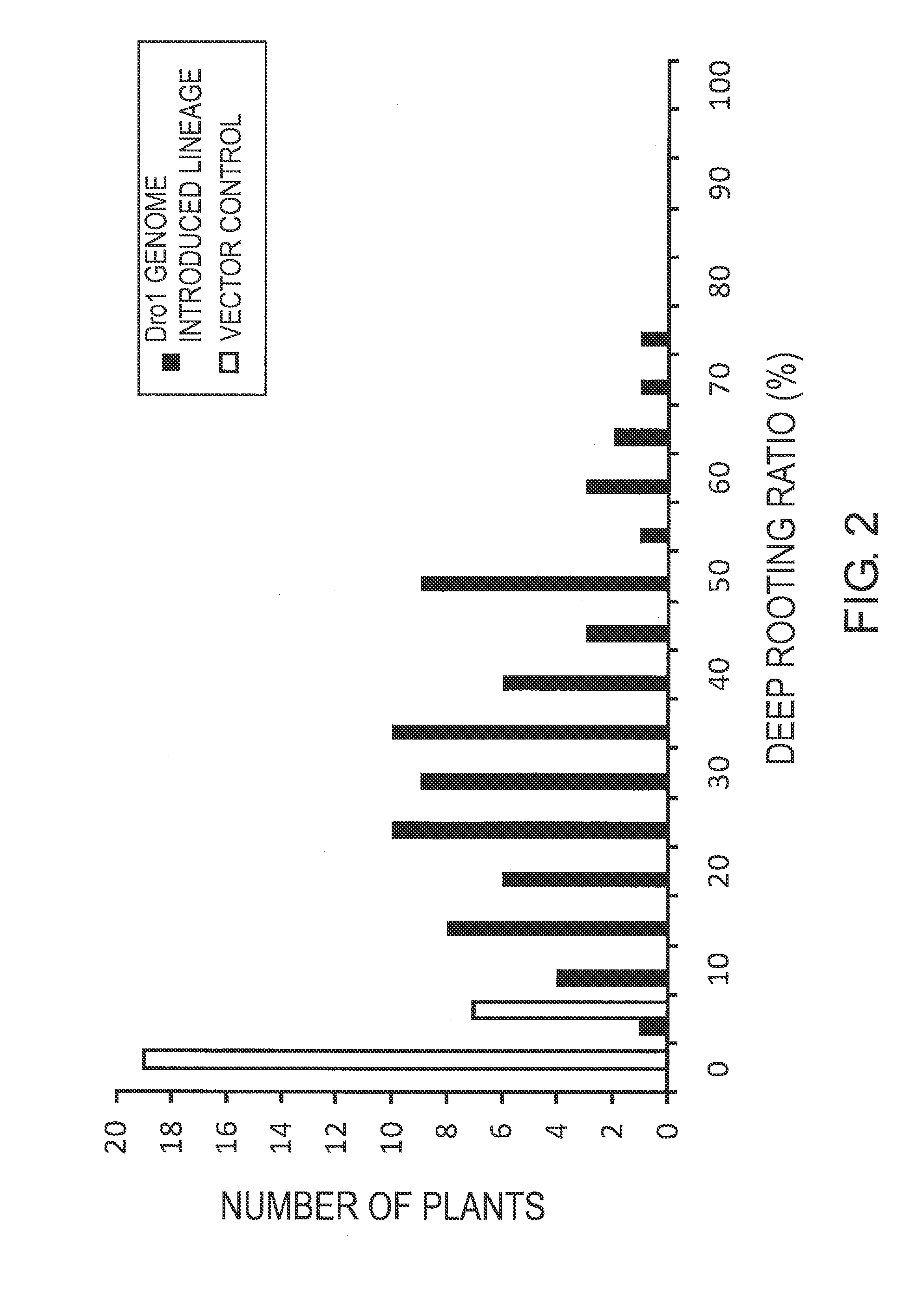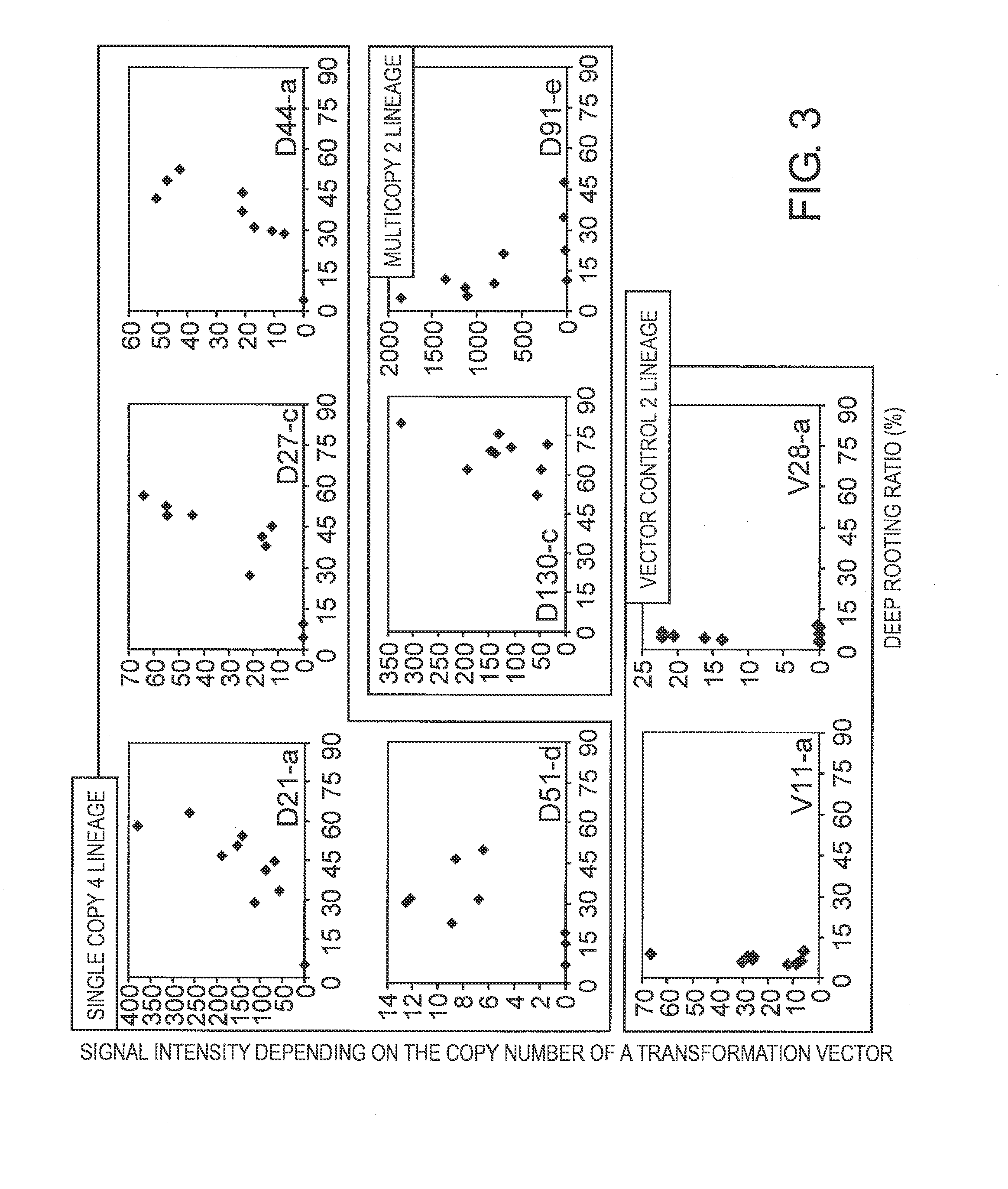Gene Dro1 Controlling Deep-Rooted Characteristics of Plant and Utilization of Same
a technology of plant characteristics and genes, applied in the field of new genes, can solve the problems of poor drainage efficiency, severe damage to crops all over the world, and difficult stable rainfall on agricultural lands, so as to improve drought avoidance ability, poor drainage effect, and drought resistance
- Summary
- Abstract
- Description
- Claims
- Application Information
AI Technical Summary
Benefits of technology
Problems solved by technology
Method used
Image
Examples
example 1
Identification of Dro1 Gene Locus
[0239]Two Rice Cultivars:
[0240]Kinandang Patong (a Philipino upland rice variety) and IR64 (a paddy-field rice cultivar developed by the International Rice Research Institute) were distributed by the International Rice Research Institute. The two cultivars were crossed with each other to obtain materials for gene isolation. Among the BC2F2 population which results from crossing of the two cultivars, a population segregated at chromosome 9 but fixed to IR64 homozygous as much as possible in the other chromosomal regions segregated into shallow-rooted plants and deep-rooted plants. IR64 and Kinandang Patong show the shallow rooting type and deep rooting type, respectively. Therefore, the gene responsible for deep rooting of Kinandang Patong was assumed to be involved in the segregation. From the perspective described above, the inventors thoroughly evaluated the population and divided the plants into shallow rooting and deep rooting types to investigat...
example 2
High-Resolution Linkage Analysis
[0241]To isolate the Dro1 gene by a map-based cloning method, 359 plants having recombinations within the candidate region were selected from BC3F2 population consisting of 4,560 plants. A large number of plants had to be assessed at one time for their deep rooting ratio to narrow down the candidate region using progenies of the selected plants. Then, the present inventors developed an evaluation method that enables hydroponical cultivation without burying baskets in pots. In the improved basket method developed by the present inventors, custom-made stainless-steel baskets with a diameter of 7.5 cm filled with soil were placed in a hydroponic medium, instead of being buried in pots. Thus, the method enables one to assess rice plants for the deep rooting ratio in one fourth of the space required in the original method. In the improved basket method, the deep root was defined as extending downward more than 50° with respect to ground surface (FIG. 1). U...
example 3
Complementation Test for Identifying the Dro1 Gene and Assessment of the Deep Rooting Ratio in Dro1 Gene-Overexpressing Plants
3.1 Complementation Test for Identifying the Dro1 Gene
[0242]The gene predicted by RAP-DB was presumed to be Dro1. A Kinandang Patong-derived 8.7-kbp KpnI-NotI fragment covering the 6.0-kbp candidate region for Dro1 and their upstream and downstream regions was inserted into pPZP2H-lac (Fuse at al., Plant Biotechnology 18: 219-222, 2001), and introduced into calluses of IR64 through Agrobacterium EHA101. Specifically, transformation of IR64 was carried out as follows.
(Induction of Calluses for Agrobacterium Infection)
[0243]Sterilized IR64 seeds were placed in a callus induction medium containing 2,4-D, and cultured at 30 to 33° C. for one week under continuous light. Then, the calluses were divided and transferred into a fresh callus induction medium. This procedure was repeated three times for callus formation. The callus induction medium used was modified fr...
PUM
| Property | Measurement | Unit |
|---|---|---|
| width | aaaaa | aaaaa |
| width | aaaaa | aaaaa |
| length | aaaaa | aaaaa |
Abstract
Description
Claims
Application Information
 Login to View More
Login to View More - R&D
- Intellectual Property
- Life Sciences
- Materials
- Tech Scout
- Unparalleled Data Quality
- Higher Quality Content
- 60% Fewer Hallucinations
Browse by: Latest US Patents, China's latest patents, Technical Efficacy Thesaurus, Application Domain, Technology Topic, Popular Technical Reports.
© 2025 PatSnap. All rights reserved.Legal|Privacy policy|Modern Slavery Act Transparency Statement|Sitemap|About US| Contact US: help@patsnap.com



